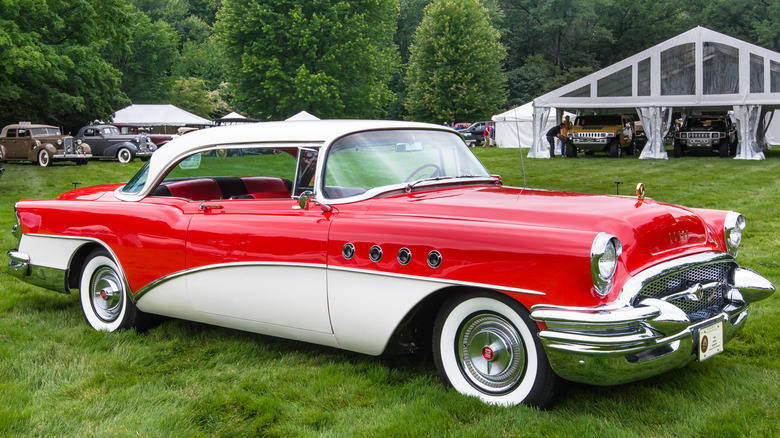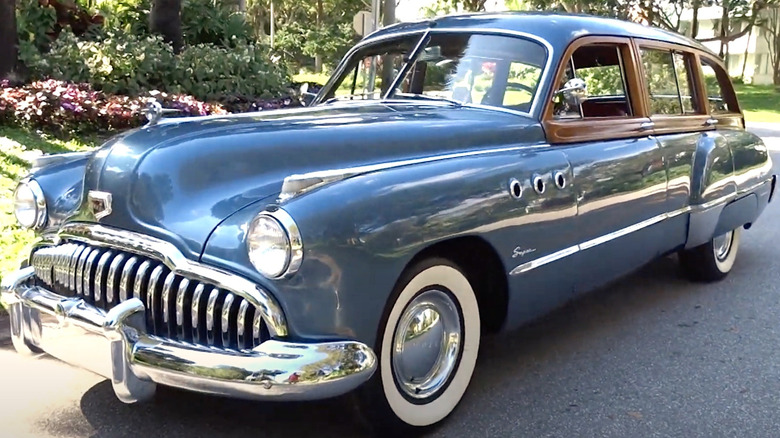Why Did Classic Buicks Have Portholes? The Story Behind The Ventiports
With its first car made in 1899 by David Dunbar Buick, Buick has been producing some sort of vehicle for over 125 years now, with Buick — owned since 1908 by General Motors — predating even Ford and Chevrolet. Of course, Buick as a brand is far from its manufacturing heyday, no longer producing sedans or sports cars, and focusing instead on SUVs like the SlashGear-approved 2025 Enclave. But in its early days, Buick was also a legit pioneer on the design front, releasing vehicles as renowned for their looks as their on-road prowess.
Buick debuted one of its most distinctive design features, its ventiports — portholes that first appeared on the sides of some Buicks — in the 1949 model year. The design feature was the brainchild of GM stylist Ned Nickles, who drew inspiration from the flashing exhaust pipes of World War II fighter planes or their gun muzzles, depending on who's telling the story. He initially installed ventiports only on his own 1948 Buick Roadmaster, outfitting the ports with lights that flashed on and off to give the impression of some serious under-the-hood fire power.
Buick general manager Harlow Curtice loved the look, and promptly ordered the design (minus the lights) – officiially designated as "Cruiser-Line Ventiports" – into certain cars in Buick's 1949 lineup. The rest, as the saying goes, is history.
Ventiports came to signify something important about a vehicle
Ventiports remained a staple of Buick design through 1957, disappeared briefly in the '58 and '59 model years, then returned for 1960. And the now-iconic design feature has appeared off and on in many Buicks in the decades since. The ventiport is, however, nowhere near as prominent these days as in the 1950s.
Despite their name, ventiports were never intended to provide extra ventilation; they were designed to provide aesthetic appeal and help distinguish Buick from other brands. They would also come to serve as a way to distinguish how fancy your Buick was and what power plant was under the hood.
There have, in fact, always been different styles of ventiport spotting vehicles' sides, with Buicks commonly sporting either three or four of the distinctive holes on the left- and right-side fenders. In the introductory 1949 model year, the high-end Roadmaster and its 320-cubic-inch inline-eight hit the streets with four ventiports, with lower-level makes like the Super (263-cubic-inch I8) and Special (248-cubic-inch I8) doing so with three.
Buick has continued to designate its vehicle hierarchy as such, though in some more recent offerings — like the now-discontinued LaCrosse and Lucerne sedans and the still-in-production Enclave SUV — three ports can indicate a V6 engine, with V8s earning four. It would seem there is at least one exception to the rule, however – the four-port arrangement was used for Buick's legendary GNX muscle car, famously powered by a V6.

